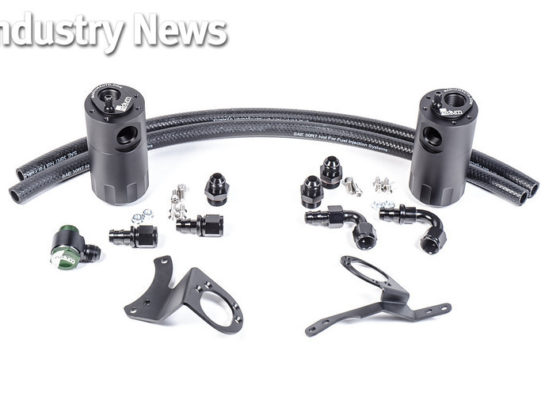
At 316 WHP, some might say we’re at the equivalent of around 370 bhp at the flywheel. If that’s true, at this power level we’re confident Project E46 M3 would be able challenge its 414bhp sibling, the E90/E92 BMW M3, which sports a V8 and lays down between 335-345 WHP on a Dynojet in stock form. This red example has lighter wheels, an AFE intake and a Corsa cat-back exhaust. To say it sounds good is an understatement (but we aren’t here for that today).
Project E46 M3: Part 18 – Project M3 vs E90 M3 V8
Project E46 M3 calls out its V8 big brother, and then some.
If you read Part 17, you learned how happy we’ve been with this car’s performance. Since owning it the last 3.5 years and 24k miles, we’ve been nothing but amazed with the capability of the S54 3.2-liter. The torquey inline-six started with a base 282 WHP (SAE) and ended up with 316 WHP, which is over a 12% improvement in wheel horsepower.
The power has come from a few upgrades, but the engine long block itself remains stock. It exhales through VAC headers, a Megan Racing Section 1, stock Section 2 (which we retained for its “H”-style crossover pipe, as tested in Part 17), and a Scorpion muffler. A CSL-style air box from Castro Motorsports and VAC water pump and power steering pulleys do their tricks under the hood.
The engine is controlled by AEM’s stand-alone Infinity ECU, which is tuned by Modified by KC. A Clutch Masters FX400 clutch and 11-lb flywheel (stock is 24 lb) also helped improve acceleration further, showing a gain in wheel horsepower in the lower gears, as tested in Part 14. Speaking of lightweight, the combination of the exhaust, wheels, brakes, clutch, and battery upgrades netted over 90-lb of trimmed fat.
Taking an E46 M3 car and adding 34 WHP with a 90-lb weight loss is sure to improve acceleration. But was this enough of an improvement to keep up with a stock E90/E92 BMW M3 with the 4.0-liter V8? There was only one way to find out. And so, we got a local E90 M3 to come out and play on a private road we had for an hour’s time for testing.
Side note: For any of you who have been following the project, you may be wondering why we’re at 316 WHP now, when we’d previously seen up to 327 WHP early on (and even before the Castro CSL-style air box). First, that 327 figure was in STD correction, which is 318 SAE. Second, that was prior to us removing the racing alternator pulley, which has remained off, but was also good for about 4-5 WHP. Third, that 327 run was a long time ago, so it’s hard to really compare dyno pulls. Lastly, the Dynojet 224x at MKC has gone through some revisions since, including new software (which doesn’t use STD anymore), so things could also be slightly different there. That is why it has always been important to get a new baseline run before a newly installed product, and preferably in the exact same weather.

When our little red friend arrived, it had brought out its other friend, a 2014 5.0-liter Mustang, to make sure there wasn’t any foul play. Why not—we invited him to come play, too!

This is Brian’s 2008 E90 BMW M3 with six-speed manual transmission. Its red paint with black interior is a beautiful combination, and the car is ultra clean. My previous E36 M3 sedan sported this same color combo, and with anthracite-colored wheels as well (the same D-Force wheels on Project E46 M3, actually, only 17-in).

The E90 M3 sports the high-revving S65 4.0-liter V8 with individual throttle bodies and a compression ratio of 12.0:1 (nice!). This one has an AFE Intake and Corsa cat-back exhaust. These cars lay down between 335-345 WHP SAE on a Dynojet in stock form. I’ve tested an E90 M3 before for eurotuner before it closed its pages, and after a similar intake and exhaust, that car went from 341 WHP to 348 WHP, with a 10 WHP peak gain near redline. Not a lot of 4-liters this side of Porsche can claim that kind of power.



